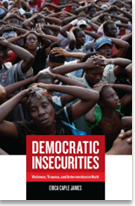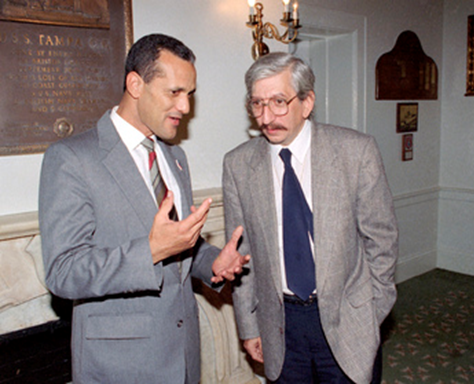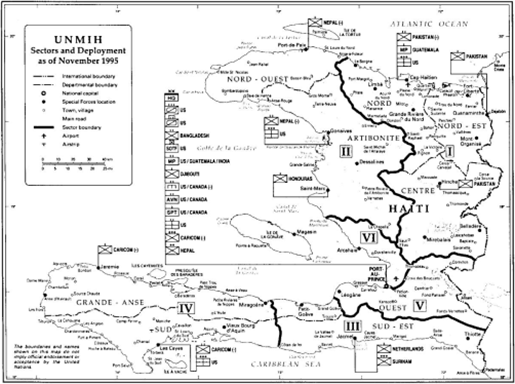 "The United Nations in Haiti" by Erica Caple James, Ph.D.
"The United Nations in Haiti" by Erica Caple James, Ph.D.
James is Associate Professor of Anthropology at the Massachusetts Institute of Technology. She is the author of Democratic Insecurities: Violence, Trauma, and Intervention in Haiti (2010).
Haiti was one of the original 26 signatories to the United Nations Charter, the document that brought the United Nations into being when it entered into force on 24 October 1945. Alongside receiving bilateral assistance from the United States and other nations, from the late-1940s until the present Haiti has been the recipient of multiple forms of humanitarian and development aid from UN agencies (i.e., the World Health Organization, UNESCO, UNICEF, and UNDP).
The scope and character of UN aid to Haiti shifted dramatically when on September 30, 1991, the Armed Forces of Haiti deposed the country’s first democratically elected president, former priest Jean-Bertrand Aristide, and commenced a three-year period in which detention, torture, disappearances, gang rape, and murder were tools of terror that suppressed the prodemocracy sector. Following an Organization of American States (OAS) resolution calling for international non-recognition of the de facto regime, on October 11, 1991 the UN General Assembly imposed economic sanctions against Haiti to provoke the restoration of constitutional order; however, such efforts were initially unsuccessful. In February 1993, a joint UN/OAS International Civilian Mission disembarked to document human rights abuses occurring in the nation under the coup apparatus. After failing to implement the July 3, 1993 Governors Island Accord—a measure brokering the departure of military rulers from Haiti in exchange for amnesty, and providing international assistance to restructure and modernize the army, as well as create a new civilian police force under UN supervision (among other provisions)—on July 31, 1994, the UN Security Council authorized Resolution 940, creating a 20,000 member multinational force to restore democracy and rule of law in Haiti. Between 1994 and 2000, several UN peacekeeping missions would be implemented, from the 1995 UN Mission in Haiti (UNMIH), the United Nations Support Mission in Haiti (UNSMIH), to the United Nations Civilian Police Mission in Haiti (MIPONUH) and the United Nations Transition Mission in Haiti (UNTMIH). Some critics of these missions felt that UN peacekeepers failed to maintain peace, and in some rare cases, even exploited vulnerable Haitians through sexual coercion.
Although Haiti would successfully complete democratic elections and transfers of power from the restored President Aristide to President René Préval (1995-1996) and back again (2000-2001), peace and rule of law would not easily be maintained. During President Aristide’s second administration a rebellion led by individuals with ties to the forces that implemented the 1991 coup fomented political unrest, ultimately provoking the ouster of President Aristide on February 29, 2004. On that same day, the UN Security Council Resolution 1529 authorized the Multinational Interim Force (MIF). On April 30, 2004 Resolution 1542 established the UN Stabilization Mission in Haiti (MINUSTAH), which succeeded the MIF on June 1, 2004.

